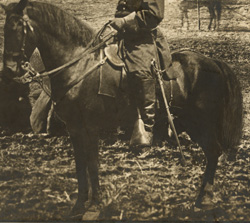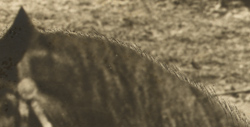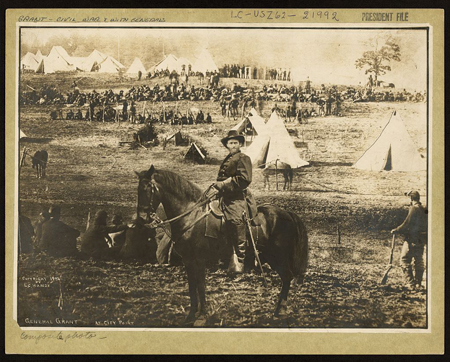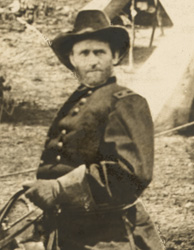Using Sources: Civil War Photography Technology & Tricks
The Civil War Glass Negatives collection provides access to about 7,000 views and portraits made during the American Civil War (1861-1865) and its immediate aftermath, many by Mathew Brady (biographical note) and Alexander Gardner.
Taking photographs during the Civil War was a complex, time-consuming process difficult to master in a studio setting and even more difficult when working outdoors.
- Photographers mixed their own chemicals and prepared their own wet plate glass negatives.
- The negatives had to be prepared, exposed, and developed within minutes, before the emulsion dried.
The Wet Plate Process
Producing photographs from wet plates involved many steps.
- A clean sheet of glass was evenly coated with collodion.
- In a darkroom or a light-tight chamber, the coated plate was immersed in a silver nitrate solution, sensitizing it to light.
- After it was sensitized, the wet negative was placed in a light-tight holder and inserted into the camera, which already had been positioned and focused.
- The “dark slide,” which protected the negative from light, and the lens cap were removed for several seconds, allowing light to expose the plate.
- The “dark slide” was inserted back into the plate holder, which was then removed from the camera.
- In the darkroom, the glass plate negative was removed from the plate holder and developed, washed in water, and fixed so that the image would not fade, then washed again and dried.
- Usually the negatives were coated with a varnish to protect the surface.
- After development, the photographs were printed on paper and mounted.
In Photojournalism An Ethical Approach (1999), Paul Martin Lester discusses the ability of photographers to faithfully record a moment in time as well as the means to alter photographs for various purposes. Read more of Lester’s summary of Civil War photo manipulations and view examples of manipulated photos.
But how how can you tell if a photo is fact or fiction? Become a better history detective by learning to question what you see in photographs. A case study prepared by the Prints & Photographs Division staff in 2008 outlines how Kathryn Blackwell, former Reference Assistant, Prints and Photographs Division, solved a mystery raised by a researcher the previous year.
Review the questions and images below to see if you can determine whether the photo at the top of this post is fact or fiction and support your conclusion with evidence. When you think you have all the pieces of the puzzle, compare your evidence and conclusion to what Library experts revealed in Solving a Civil War Photograph Mystery.
Is this General Grant?
Was he that stout around the middle?
Why is Grant, who was noted for his skill and ease around horses, sitting so rigidly on his mount?
 |
 |
And, come to think of it, is that really Grant’s horse?
Look closely at the images below. Notice anything?
 |
 |
Have you solved the mystery? Need more help?
Click the black boxes below to reveal images that might help you put the pieces together. (Note: Use may need to use your browser back button to return to this page after clicking through to an image.)
 |
 |
 |
Don’t forget to go online to uncover the whole story by reading Solving a Civil War Photograph Mystery!
Also check out Civil War Photographs: New Technologies and New Uses, which includes a teacher’s guide.


